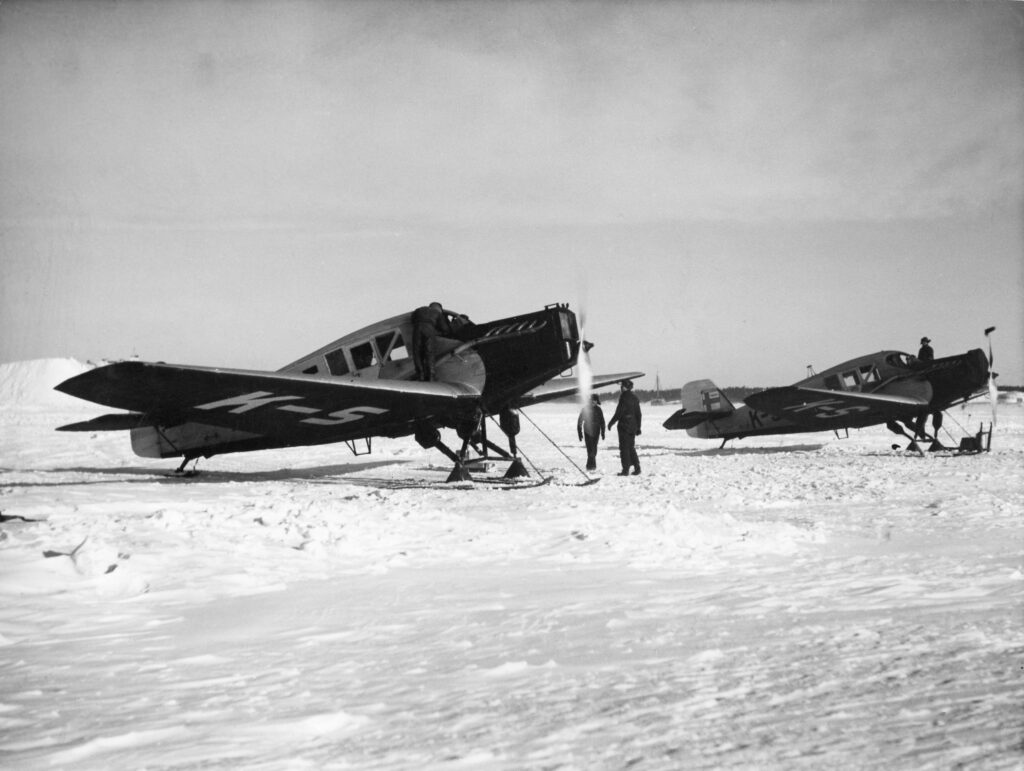Founded in 1923, Finnair has grown from humble beginnings to become a respected and successful international carrier. Here is the remarkable journey of Finnair, one of the world’s oldest operating airlines.
Foundation and early years

Finnair, originally known as Aero O/Y, was established on November 1, 1923, by businessmen Fritiof Ahman, Gustaf Snellman and Bruno Lucander. They were helped by Lieutenant Colonel Arne Somersalo, commander of the Finnish Air Force, who provided technical assistance, and the famous German plane designer and manufacturer, Hugo Junkers, who leased two aircraft. In the absence of an operational airport in Finland, the fleet was fitted with floats during the summer season and skis during winter.
The airline’s primary goal was to provide domestic and international air travel services, connecting Finland to the rest of the world. In 1924, Aero’s first aircraft, a Junkers F.13, took to the skies on an air mail mission from Helsinki’s Katajanokka port to the Estonian capital Tallinn.
The airline faced significant challenges during its early years, including the impact of the Great Depression and the disruption caused by the Winter War and the Second World War during which the airline was requisitioned by the military. Despite these hardships, Aero managed to survive and maintain a small but vital presence in the Finnish aviation industry.
Post-war changes

The post-war era marked a turning point for the airline. In 1946, the Finnish government acquired a majority stake and developed its network towards various European cities.
In 1954, Aero started to operate using the name Finnair.
The airline also modernized its fleet and began to operate the DC-3 aircraft and later the Convair 340/440. These acquisitions allowed the airline to offer more destinations, and by the end of the 1960s, Finnair had become a recognized player in the European aviation market.
Jet age and global expansion

Finnair was among the first airlines to enter the jet age, operating the Sud-Aviation Caravelle jet airliner, and becoming the launch customer of its upgraded version, the Super Caravelle, in 1964. Several other jet aircraft were introduced in the following years, such as the Boeing 727 and the McDonnell Douglas DC-10.
The airline’s long-haul capabilities improved, enabling it to establish routes to North America and Asia. This expansion was a significant milestone for Finnair, as in 1983 it became one of the first European airlines to operate regular services to Japan. Direct flights from Helsinki to Beijing, China, began in 1988.
The 1990s saw the airline further expand its international reach and modernize its fleet, introducing Airbus A320 and A340 aircraft. In September 1999, Finnair joined the Oneworld alliance.
21st century and beyond

Finnair placed an order for nine Airbus A350 aircraft in 2005. The introduction of the Airbus A350 XWB aircraft in 2015 further enhanced the airline’s long-haul capabilities, making it a European leader in terms of connectivity with Asia
By 2019, the airline was enjoying record growth in profitability and passenger numbers and looking ahead to further fleet expansion when the COVID-19 pandemic struck. But even more so, Finnair was severely impacted by the invasion of Ukraine by Russia, as its strategy relied on connecting Europe and Asia via the short northern route, which now includes closed Russian airspace.
“When you meet not only one black swan, but several black swans, like we have been meeting over the past three years, then it all boils down to the resilience, the resourcefulness, the innovativeness of your people,” stated Finnair President & CEO, Topi Manner, in a conversation with AeroTime in January 2023.
And it seems like the new strategy has paid off. Finnair remained profitable in the first six months of 2023 and estimates its full-year profit to fall between €150 and €210 million ($166.8 and 233.6 million).
To celebrate its centenary, Finnair unveiled several initiatives, including new in-flight menus, a clothing line with the Finnish brand Makia, and a special livery featuring the popular children’s book characters, the Moomins.

